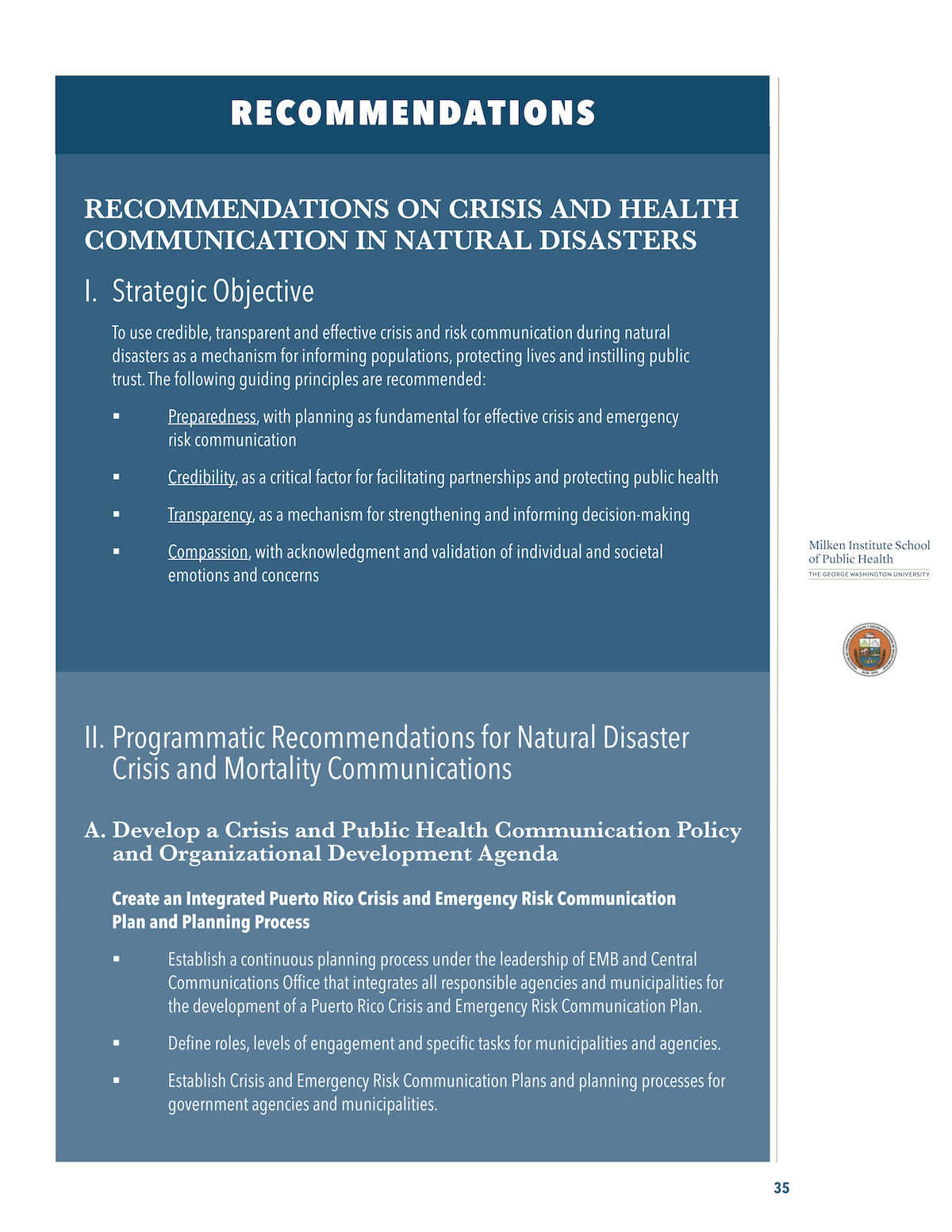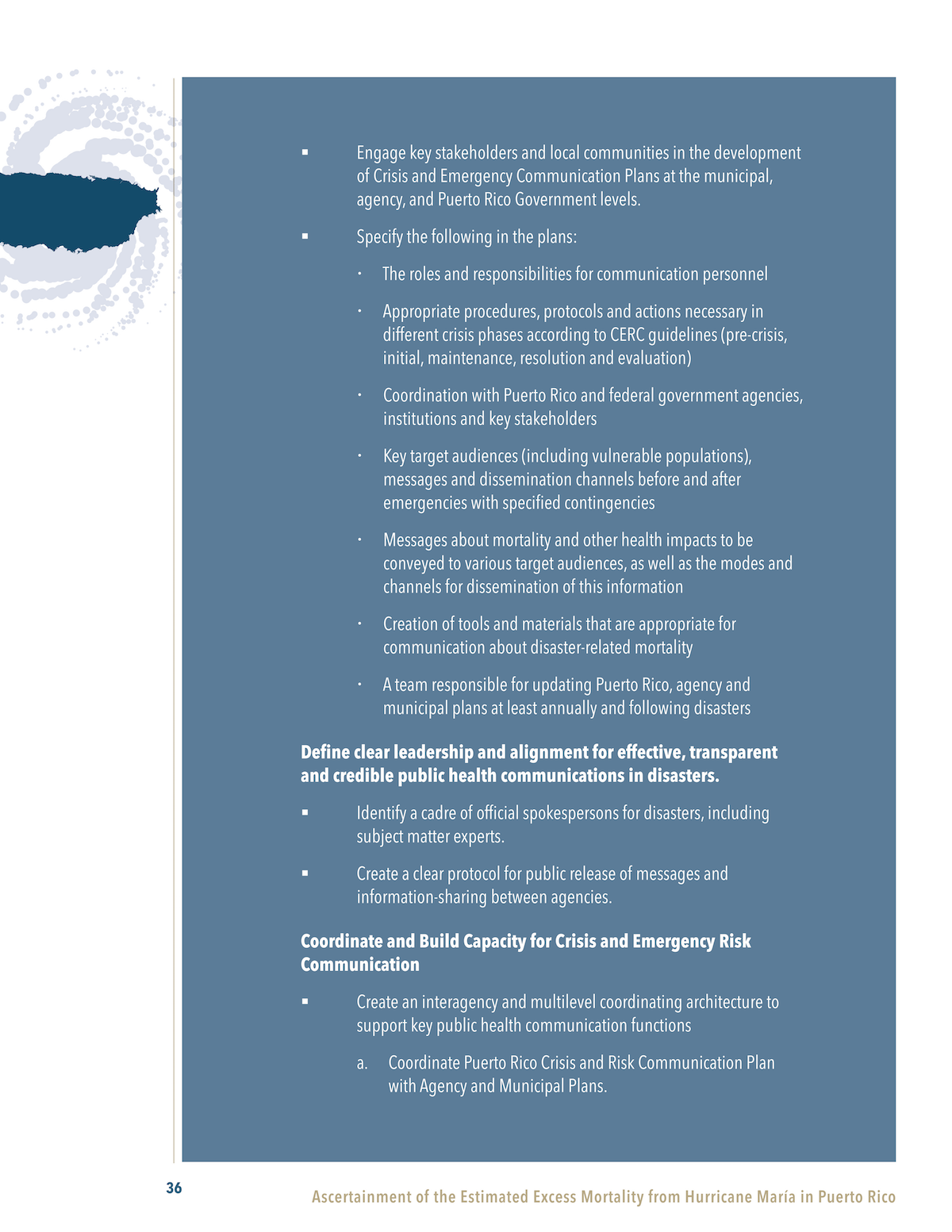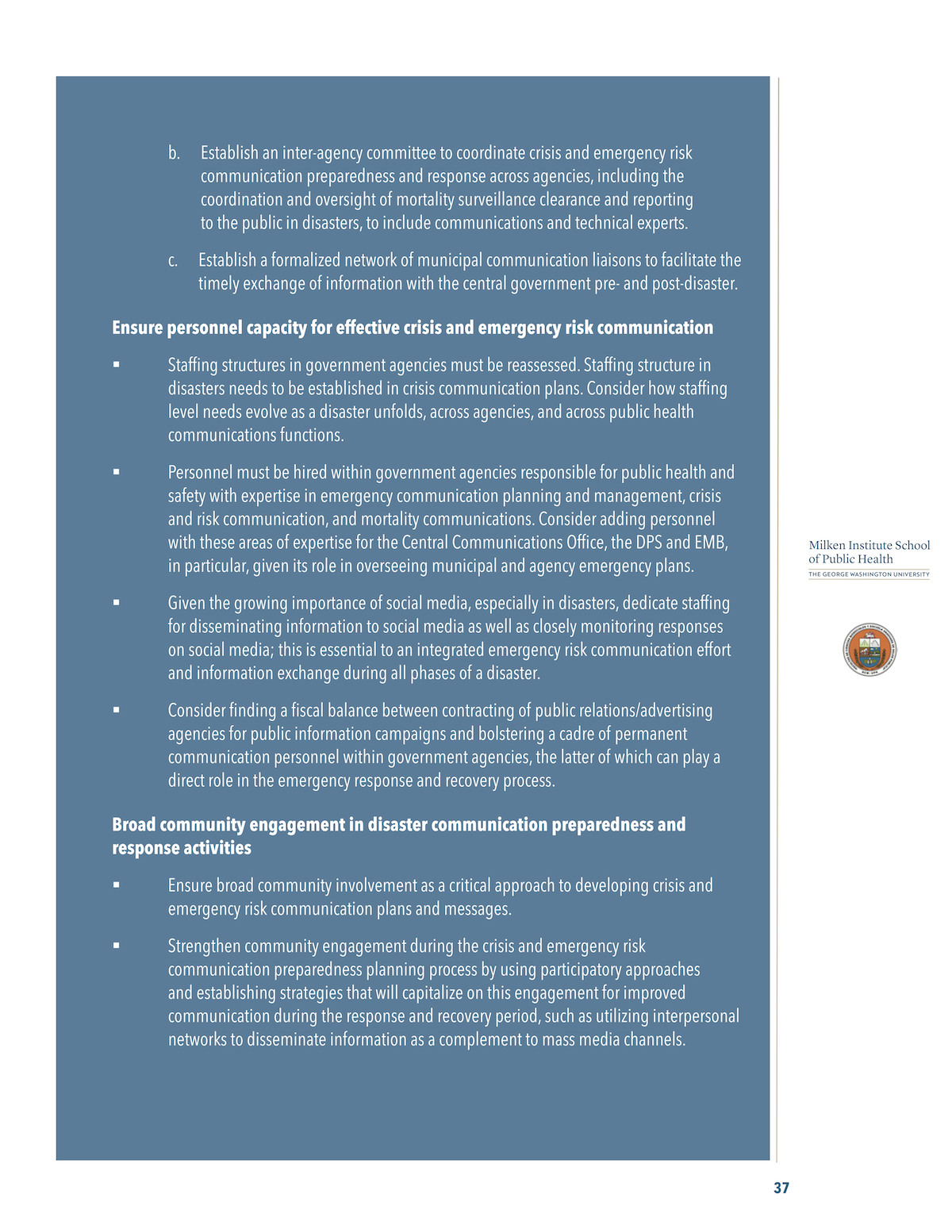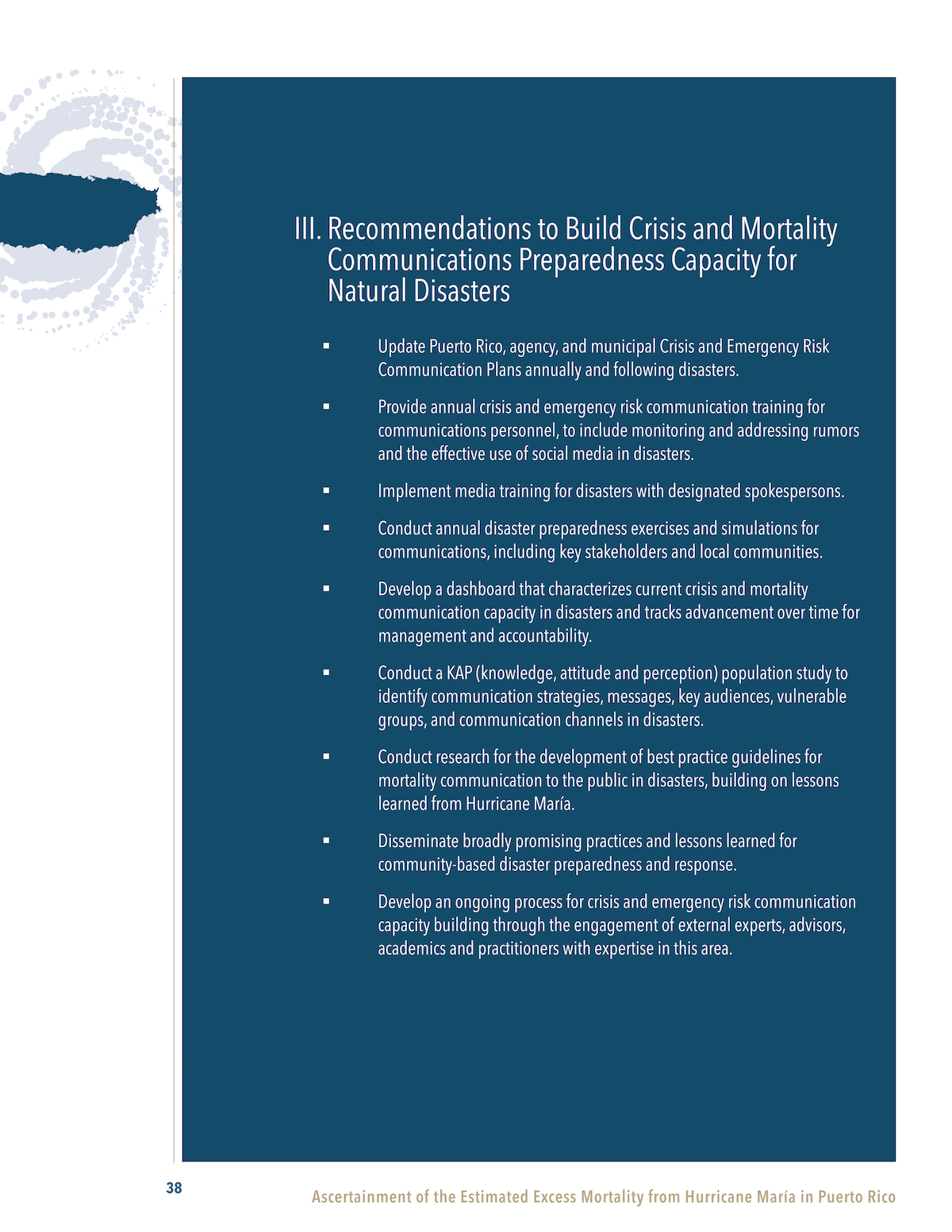

Puerto Rico Ricardo Rosselló on September 27, 2017, a week after Hurricane María struck the island (U.S. Army National Guard photo by Staff Sgt. Michelle Gonzalez)
More than a year after Hurricane María essentially destroyed Puerto Rico on September 20, 2017, and months after finally acknowledging that the death toll caused by the powerful storm was underreported, the government of Puerto Rico announced on Friday the creation of a 9/20 Committee that it says will help “in the creation and revision of death certification protocols and improve accountability and the management of information regarding fatalities caused by natural and man-made disasters,” according to an official release.
The committee will consist of public health and officials from the administration of Puerto Rico governor Ricardo Rosselló.
The committee was formed in response to the August 28 report by George Washington University’s Milken Institute of Public Health, which estimated excess deaths the months after Hurricane María to be at 2,975 lost lives. After that report was released, the government of Puerto Rico officially acknowledged the death toll at 2,975, up from 64.
The 9/20 Committee said it “will establish protocols to implement the Milken Institute of Public Health recommendations outlined in its report,” the release noted.
The August 28 report continued several recommendations near the end of its report. Here are the recommendations:








The full study from August 28 is below:
All these recommendations are from Phase 1 of the study. There were plans for a Phase 2, which would involve more specific examinations about how the excess deaths were related the Hurricane María, but according to GW researchers, there is no money for Phase 2 at this stage and when talking to Latino Rebels Radio this past summer, GW did not confirm that Phase 2 was officially approved. Questions to the government of Puerto Rico about whether the 9/20 Committee would push for a Phase 2 have yet to be answered.
The government release said the 9/20 Committee will be co-chaired by Carlos Mercader, executive director of the Puerto Rico government’s Federal Affairs Administration (PRFAA), and Dr. Irwin Redlener, director of the National Disaster and Preparedness Response Center (NDPRC) at Columbia University.
“The George Washington University’s excess mortality study was a novel approach at tabulating death tolls, not just in Puerto Rico but worldwide. It is our intention that this Committee serve as a model for the whole of the United States so that we can more adequately assess mortality but more importantly, avoid the loss of life during and after both natural and man-made disasters,” Mercader said in the release.
“The establishment of the 9/20 Committee means Puerto Rico is positioning itself to lead the way in researching and implementing new methods to standardize how short and long-term disaster-related fatalities may be most effectively tabulated. These new strategies will be valuable in any jurisdiction experiencing a major disaster,”, Dr. Redlener added in the release.
The release also included a quote from Rosselló: “As we enter the long-term reconstruction of our island, we are committed to building a safer, more resilient Puerto Rico. This Committee will play a key role in the future of Puerto Rico, as it will establish the appropriate protocols and guidelines so that we are better prepared in the face of a disaster such as Hurricane María. I thank all the members of the 9/20 Committee. Their work and its implementation will be crucial both for accounting for those that perished and preparing ourselves for what the future might hold”, he concluded.
Here are all the 9/20 Committee members:
- Mercader
- Dr. Redlener
- Jeffrey Schlegelmilch, Deputy Director, National Center for Disaster Preparedness Columbia University
- Eric Greenberg, Chief of Staff, Columbia University National Center for Disaster Preparedness
- Dr. Carlos Santos Burgoa, Director, George Washington University’s Global Health Policy and Professor
- Rafael Rodríguez, Secretary and Neurosurgeon, Puerto Rico Department of Health
- Héctor Pesquera, Director and former FBI agent, Puerto Rico Department of Public Safety
- Carlos Acevedo, Director, Puerto Rico Emergency Management Agency
- Dr. Carmen Deseda, State Epidemiologist, Government of Puerto Rico
- Dr. Luz Silva, Interim Director, Puerto Rico Forensics Science Bureau
- Wanda Llovet, Director, Puerto Rico Demographic Registry
- Jaime Plá, President, Puerto Rico Hospital Association
- Dr. Víctor Ramos, President, Puerto Rico Medical Surgeons Association
- Dr. Ralph Rivera Gutiérrez, Dean, University of Puerto Rico School of Public Health
- Eduardo Cardona, President, Funeral Homes Association of Puerto Rico
- John Mutter, Seismologist and author of “The Disaster Profiteers”
- Nicolette A. Louissaint, PhD, Executive Director, Healthcare Ready
- Rossy Santiago, Director, Office of Communications, Office of the Governor of Puerto Rico
- Pedro Cerame, Communications Director, Puerto Rico Federal Affairs Administration
Questions to the government of Puerto Rico about whether non-government members of the committee were being compensated have yet to be answered as of this posting.
In addition, Dr. Ralph Rivera Gutiérrez posted on Facebook that he was never asked to be on the committee and that he is no longer dean of the University of Puerto Rico School of Public Health.
Vean esto que a ustedes le gustaaaaaaaaaaaaa! pic.twitter.com/P0IeYQinen
— Alexis Santos-Lozada (@AppDemography) November 2, 2018
CBS News correspondent David Begnaud tweeted the following about Rivera Gutiérrez:
Look for an update shortly. Apparently the individual in question no longer has that roll so the seat will be filled by the person currently in that position.
— David Begnaud (@DavidBegnaud) November 2, 2018
The government of Puerto Rico has confirmed that Dharma Vázquez, interim dean of UPR Graduate School of Public Health, will be on the committee, and not Rivera Gutiérrez.
Phase 1 of the EO is to work on the development of guidelines and work plan for the Committee. This process in general will look to make sure that best practices in planning and implementation of preparedness, response and recovery measures are put in practice to protect public health and safety in the future. There is No compensation to committee members. The EO names a representative from the . That member will be, the interim dean.
Last November, Puerto Rico’s Center for Investigative Journalism (CPI) published its first analysis of uncounted deaths, and on December 7, 2017, using public health data, it reported than an excess of 1,000 deaths occurred in September and October of 2017, when compared to the same time period in 2016. On December 8, The New York Times published its own analysis and estimated 1,052 hurricane-related deaths. Earlier this past June, the CPI and CNN won a court ruling, instructing the government of Puerto Rico to provide mortality statistics and records for the months after Hurricane María.
Data from June 13 released by the island’s Registry Department estimated 1,427 excess deaths for the last four months of 2017, when compared to same months the four previous years, but the government would’t confirm at the time whether these excess deaths were all related to the hurricane.
Two months later, after the GW study, the official death count from Hurricane María changed to 2,965.
UPDATE, 3:28pm: The government of Puerto Rico said that Phase 1 will be to work on the development of guidelines and work plan for the Committee. This process in general will look to make sure that best practices in planning and implementation of preparedness, response and recovery measures are put in practice to protect public health and safety in the future. Phase 2 will be contemplated within the work plan the Committee will work on. In addition, the government of Puerto Rico said that no committee members will be compensated.
***
Julio Ricardo Varela is founder and publisher of Latino Rebels, part of Futuro Media. He tweets from @julito77.


